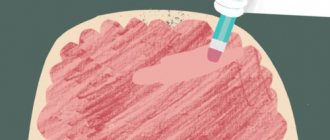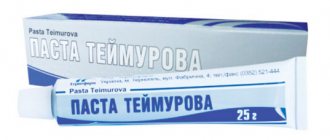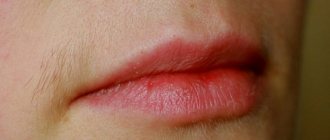Woodlice are quite a frequent visitor to human habitation. These are small crustaceans that have long been adapted to life on land, but always in damp and dark places. In this article we will figure out how to get rid of woodlice in your apartment if you have them.
Their natural habitat is nature. They can be found under snags, stones, fallen leaves, in landfills, heating mains and anywhere you can hide from sunlight and enough moisture. But often woodlice can be found in a comfortable apartment, where they sometimes crawl, and where they can subsequently firmly establish themselves.
Reasons for appearing in the apartment
Since woodlice are crustaceans, although accustomed to life on land, they need moist air. They, like their relatives, breathe with gills, and this explains their intolerance to dry air. Therefore, woodlice may appear in an apartment due to the fact that the humidity in the room has increased and it has become comfortable for the appearance of crustaceans.
The reasons for high humidity in the apartment may be plumbing problems (leaking pipes, etc.), frequent heavy condensation (for example, in the bathroom after washing), infrequent ventilation of the apartment, hanging washed clothes indoors to dry, etc.
But there are other reasons for the appearance of woodlice in the house:
- insects live with neighbors, from where they crawl through cracks in the floor or cracks in the walls;
- from basements or attics (which is why residents of the lower and upper floors primarily suffer from woodlice infestations);
- from the sewer;
- through ventilation holes;
- from garages and other buildings adjacent to the house;
- along with vegetables and fruits brought from the market (unlikely).
Woodlice rarely appear in large numbers at once. Usually single individuals crawl into the house, so it is not always possible to notice them immediately (especially considering their love for the dark and activity only at night). But gradually new individuals arrive, plus reproduction, and as a result, woodlice soon begin to literally swarm in the corners.
How to get rid of woodlice
First, determine their location in the household. You need to start with indoor plants, look through all the hard-to-reach places, corners, baseboards. The fight should begin by eliminating excess moisture. Do not dry clothes in rooms, ventilate rooms more often, and use dehumidifiers. If there are cracks, they must be sealed using a sealant or building mixture. This will prevent them from entering through such places.
Also, it is worth checking all pipelines in the household. Any leakage will help increase humidity and, therefore, maintain a suitable climate for insect activity.
If woodlice has infested your home flowers, immediately change the soil in them. Before transplanting, the root system of the flowers is thoroughly washed so that no specimens can remain on them. If you place the roots of a flower in water for a while, the remaining bugs will simply float up.
There are two methods - using chemicals or folk remedies.
Chemical method
Chemicals released to kill harmful insects, as a rule, begin their action either directly on the insect itself or in its body. However, instant death does not occur; the infected insect spreads the poison to its relatives.
Chemical agents are:
In the form of aerosols. They are used for small areas of spread and act in a targeted manner. These may be products such as Dichlorvos, Combat or Raptor;- In the form of concentrates for preparing a solution, which is sprayed into habitats using a respirator;
- In powder or dust. It is laid out under baseboards, in dark places, under pipes, etc. Important: It is necessary to take into account the fact that powdered insecticides are used exclusively as additional means, since it is not a fact that woodlice crawl on the floor.
- In crayons or pencils, such as Mashenka or Titanic. They can be applied to walls, near ventilation, around cracks, which will create a barrier to the penetration of new individuals. If an insect crosses such a line, it will soon simply die;
- Gels used to kill insects such as ants and cockroaches will also have a detrimental effect on woodlice. They, like chalk products, are considered effective;
- Baiting with poison will help get rid of not only woodlice, but also any insect that likes to feed on human food. Basically it consists of egg yolk, insecticide and boric acid powder.
- The use of sticky traps is more suitable for preventative measures. With their help, single individuals are caught.
Important: When using any type of insecticidal substance, you must carefully study the instructions for use and be sure to use personal protective equipment.
When choosing such products yourself, you should not take the most powerful action, which will destroy all woodlice. This is, first of all, a chemical drug that can have a toxic effect on humans and animals. And if you treat your house with a powerful agent in a large dosage, it will simply be unsafe to be in it. The best option would be a combination of several products. For example, a spray or pencil, the action of which is slower but more effective.
Important: When using insecticides, you must block in advance all possible places where insects can enter your home. Without this nuance, their use will be meaningless. Also, during chemical treatment, animals and children should not be nearby.
Traditional methods
- Boric acid powder. It is considered a very common substance in pest control. Sold at any pharmacy. It is scattered in all corners of the rooms. A solution can also be made from it, which simply needs to be sprayed onto the infection sites. Baits are also made by mixing this powder with some product, which are placed in areas of accumulation.
Soda, tobacco and red pepper are mixed in water, then the room is sprayed with this solution. After eight hours, the spray areas are washed with chlorine water.- Another spray solution is water and vinegar.
- Potato tuber is used as bait. Why is it cut and laid out in the corners? The juice will help attract woodlice, which are then disposed of along with the bait.
- Birch branches that are placed in the corners of rooms can be used as traps. Woodlice will crawl into the leaves, which are then shaken over the fire.
- Another effective grandmother’s remedy is a solution of dry kvass, which is used to treat habitats.
- Chlorine. All open surfaces are washed with it.
- Alum solution is considered a very effective remedy. Sprays similarly.
- Salt scattered in cracks and corners can deal with woodlice.
- Lime solution. It is poured into a vessel and left for a while. There should be no people nearby. because the solution vapors are very toxic. This is suitable for a basement or seasonal cottage.
Important: When working with lime at home, you need to be extremely careful. When it gets on the skin, it causes a burn. In addition to the above remedies, you can use a simple hair dryer or steam cleaner. Woodlice are afraid of hot steam. They die when exposed to temperatures above seventy degrees.
Types of woodlice living in apartments
In total, there are about 3,500 species of these crustaceans in the world. There are only a few dozen of them on Russian territory. However, only the most unpretentious of them can settle in an apartment. There are only 2 such relatively unassuming species - the common woodlice (armadillo) and the rough woodlice.
Common woodlouse (armadillo)
For armadillos, human habitation is not the best option, but once there, they can easily establish themselves firmly.
As already mentioned, woodlice look like beetles in appearance. Their body is oval-shaped, flattened, and can reach from 10 to 20 mm in length. As can be understood from the name, this type of armadillo has protection in the form of armor. On the back there is a 7-segmented hard shell, each segment has its own pair of legs. Segments are panels located “overlay”, one on top of the other (like tiles).
in the photo there is an armadillo
The body color of woodlice is dark gray or almost black. The head is small, it has 2 pairs of antennae: one pair is underdeveloped (almost invisible), the second is very well developed.
Woodlice feed on any plant food, consuming both living and decomposed plants, as well as microorganisms.
Once in the apartment, they settle in the bathroom, behind the boiler, in the toilet behind the toilet, in closets or closets where fruits and vegetables are stored. Not only indoor plants and stored fruits can be eaten, but also mucus and mold in the bathroom and toilet. When the light turns on, they try to retreat and hide in their favorite dark corners. Armadillos are very slow, and in case of danger they have little chance of escaping: when caught, they simply curl up into a ball, covering their entire body with a hard shell.
Woodlouse rough
It is this species that is the most frequent guest in human housing. Unlike the armadillo, the rough woodlouse is very nimble and runs away quite quickly when the light is turned on. If you catch her, she will struggle in every possible way, twitching her paws. Doesn't curl up into a ball.
Its shell is soft and flat. The color depends on the location of distribution: in the south - grayish-pink, in the north - yellow-red, in the east - almost black. They can occupy an apartment in hordes. Their presence in the house indicates increased humidity in the room.
Sometimes people confuse woodlice with silverfish, a small, almost white insect. It is shown in the photo below.
Woodlouse – video, description
By the way, almost everyone who has studied biology for a long time is sure that woodlice is an insect.
Meanwhile, woodlice is a representative of the class of crustaceans, an order of isopods. That is, she is the closest relative of crayfish and crabs. Woodlice should not be confused with silverfish insects. The body of the woodlice is convex, consisting of small segments, the eyes are located on the side, and the outer antennae are almost equal to the length of the body. Some species have designs on their backs similar to oriental hieroglyphs. The shell is divided into segments, each of which has legs. When in danger, they pretend to be dead, curling up into a ball.
She bears offspring in the folds of her abdomen; after the eggs turn into living individuals, they come out. The lifespan of woodlice is from 9 to 12 months.
There are 4,500 species of these isopod crustaceans, which have adapted to survive in different conditions. Woodlice are found in all climatic zones of the planet.
They live on land, but in damp places. During the day they hide in shelters, and in the evening and at night they go in search of food.
Woodlice feed in the house on plant debris - plant roots, flower stalks, new shoots. In nature, these are tree bark, algae and moss. After a feast of woodlice, holes can be found on the leaves of plants, but only on the outside; they do not move on the inside.
Damage caused
The main danger of woodlice is for indoor plants. They often settle directly in pots, especially if water often accumulates in the trays after excessive watering. Crustaceans happily feast on the leaves of plants, eating holes in them, and also compact the soil in pots, which blocks the access of air to the roots, and the plant dies.
If the house has pantries or closets where supplies of fruits or vegetables are stored, woodlice will be happy to spoil them too. The same applies to the kitchen, where there are both food supplies and sources of moisture.
Woodlice do not attack or bite humans, so they are not capable of causing significant harm. But, crawling into a home from landfills, dirty basements, attics, and simply from the street, woodlice automatically spread infectious diseases. In order not to expose yourself and your family to the risk of becoming infected, you should immediately begin the fight against woodlice.
Reviews
I recently discovered some nasty insects in my flowers. As it turns out, these are woodlice. I purchased the drug "Avalon", the problem was solved.
Anastasia Melnik
It seemed dry in the basement, but unexpected guests appeared from somewhere. I had to set traps, but it didn’t help much. As a result, I decided to buy the drug "Gett". It seems that the problem has been solved, but I did not remove the traps. You never know - at least I’ll notice it in time if I come across it.
Nikolay Kostikov
There was an unpleasant encounter with a woodlice near the porch. As it turned out, it was not a single insect - dampness had formed under the veranda, and there were a lot of pests there. I had to purchase special tools, including Tetrix. Inna Mazurova
Destruction of woodlice
Removing woodlice is not difficult, and you can do it yourself. Before you fight these crustaceans, you need to identify where they got into the house from. It is necessary to carefully check the walls, floors, ventilation for cracks, cracks and other damage. Once entry routes are discovered, seal them immediately. You need to hang a mesh over the ventilation holes. Only after this will it be advisable to begin directly combating woodlice in the apartment.
After this, you should find the places where woodlice mainly accumulate. To do this, you need to take a good look at flower trays, dark corners in the bathroom, trash cans, toilets, under baseboards, behind sofas. When areas of accumulation are detected, the destruction process can begin:
- dry the room thoroughly (you can use an air conditioner or fan);
- scattering table salt in the corners or perimeter is an effective folk way of fighting these creatures;
- use boric acid - a proven insect repellent (sprinkle powder or place poisoned baits);
- use traps (a wet rag or a damp broom at night near the accumulation areas, and in the morning throw them away along with the crustaceans that have crawled there);
- carry out wet cleaning with a chlorine solution (40 g per liter of water);
- transplant the plants into new soil, after first washing the roots with lukewarm running water or a weak solution of potassium permanganate.
If the above methods are ineffective, it’s time to resort to “heavy artillery” - insecticides:
- draw out the room with chalk to prevent cockroaches “Mashenka”;
- carry out treatment with universal gel “Schabengel”;
- treat areas of accumulation with Dichlorvos, Tarax from household insects, Tetrix, Mole, etc.
You will also have to treat the soil of indoor plants, strictly following the instructions so as not to harm the flowers. Grom, Grom 2, Aktara, Ideal are suitable for this.
Prevention
The appearance of woodlice in an apartment can be completely avoided if you monitor the order and condition of your home, avoiding excessive air humidity:
- remove moisture in a timely manner;
- regularly ventilate the room;
- do not accumulate water in trays;
- Wash dishes and take out trash in a timely manner;
- seal any cracks and cracks in a timely manner;
- monitor the condition of plumbing;
- dry washed clothes on the balcony or loggia, and not in the bathroom or kitchen;
- systematically inspect indoor plants;
- keep the apartment clean, including in hard-to-reach places.
If neither preventive nor destructive measures for any reason help to cope with woodlice, you can contact the sanitary and epidemiological station.
What insects are similar to them
Woodlice are insects that belong to the suborder of crustaceans, have a rounded body, divided into sections (read more about what type, class and order the woodlice belongs to in this article). It includes the head, chest, and also the abdomen. Insects appear throughout the year and are considered most intense in spring and autumn, reproduction occurs in the summer, and it is curious that the female carries her eggs in a sac, on her own body, until she finds a place protected from predators to transfer them.
On a note. Of absolutely all representatives, this is a unique insect that has best adapted to land, however, despite this, they also breathe with gills.
- Silverfish. This wingless small insect belongs to the bristletail family. It is not a representative of crustaceans, unlike woodlice. Its body size is from 0.8 to 1.9 cm. The body has dense silvery scales, and it ends with a pointed tail, which woodlice do not have. Unlike the woodlice, which has seven pairs of legs, the silverfish has only three.
- Kivsyak. Representative of bipedal centipedes. It has a segmented body, with two pairs of legs on each of them. Woodlice have only 14 legs. It has a round body shape, which differs from the oval body shape of the woodlice. They breathe with the help of tracheas, and woodlice use gills for this. They also differ in body size: in woodlice up to a centimeter, in woodlice from 3 to 30 centimeters.
- Glomeris. They are bipedal centipedes. They are often confused with woodlice. However, they are easily distinguished by their glossier color, more legs and the presence of a shield behind the head. Their colors are varied: black, yellow, brown, etc. The body is covered with 12 visible scutes. The number of legs varies from 17 to 21, but woodlice have fewer. They feed on living and dead parts of plants.
Follow simple rules when creating optimal living conditions and indoor microclimate, do not allow high levels of humidity in your house or apartment, and then you will never meet an unwanted guest in the form of woodlice.
Materials from the section wood lice
An uninvited guest in the house - what do woodlice eat in the bathroom, apartment and other rooms?
Why are there wood lice in the bathroom or toilet and how to get rid of them? Prevention recommendations
Description and classification of woodlice, danger of the crustacean to humans
What harm can wood lice cause to humans and others living in the apartment, why are they dangerous and how to deal with them?
The insect in the apartment is a white woodlice. What are the reasons for the appearance and how to get rid of the pest?











